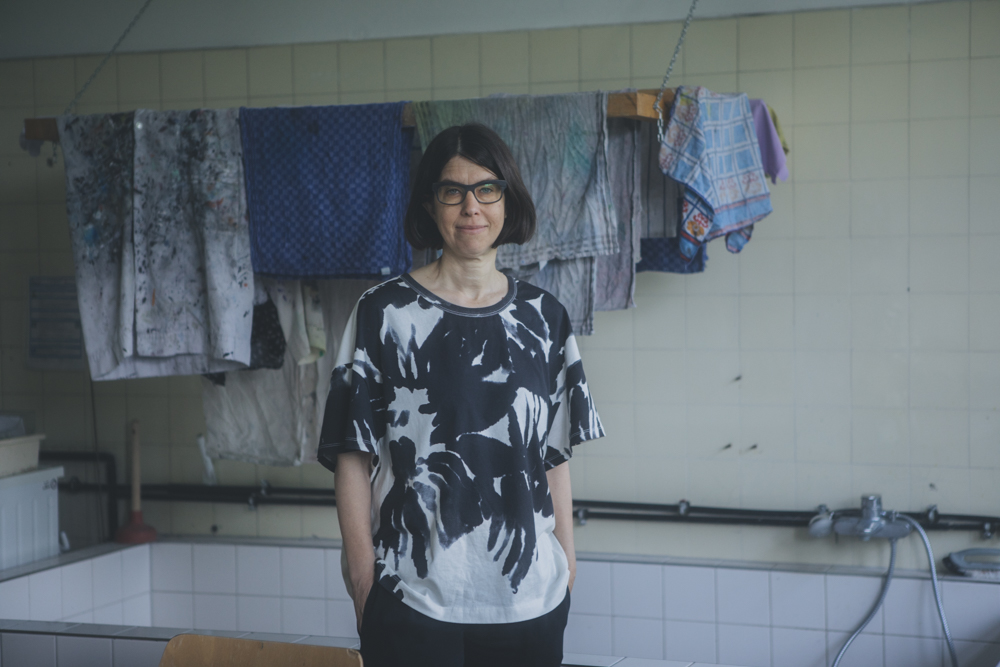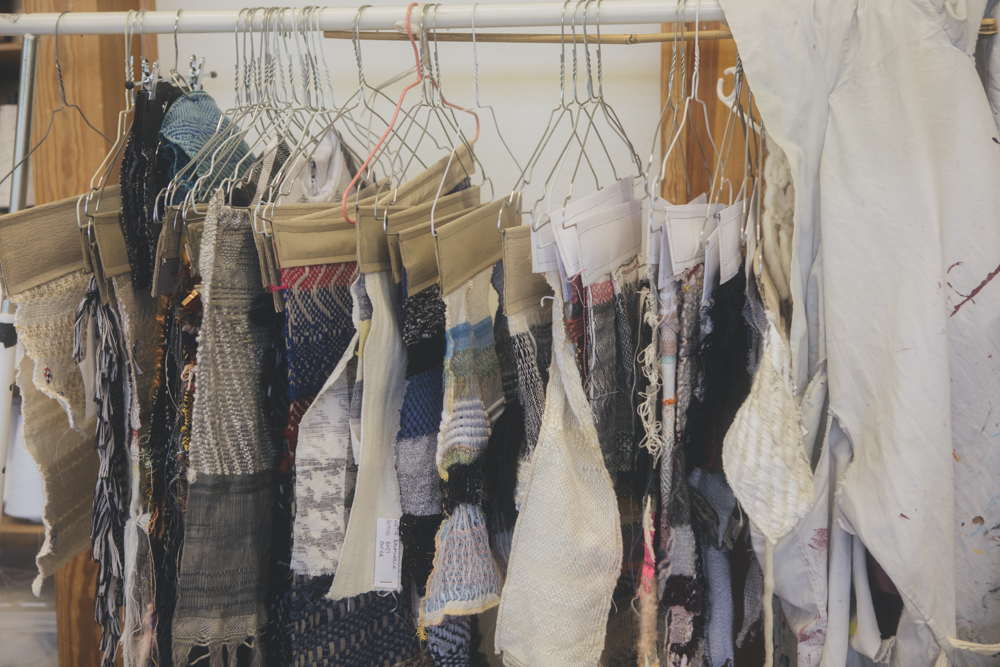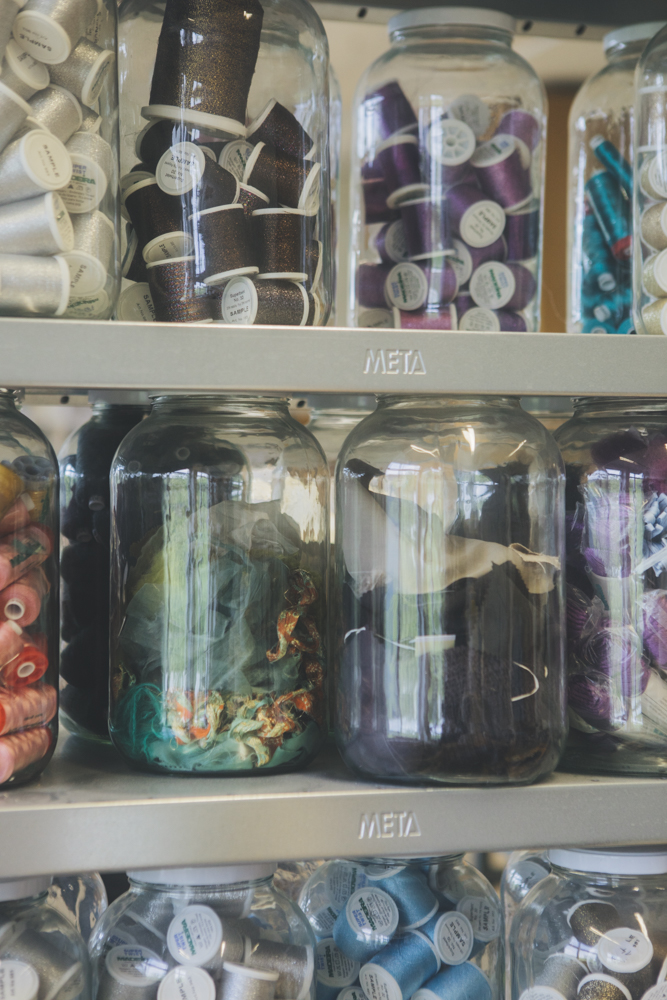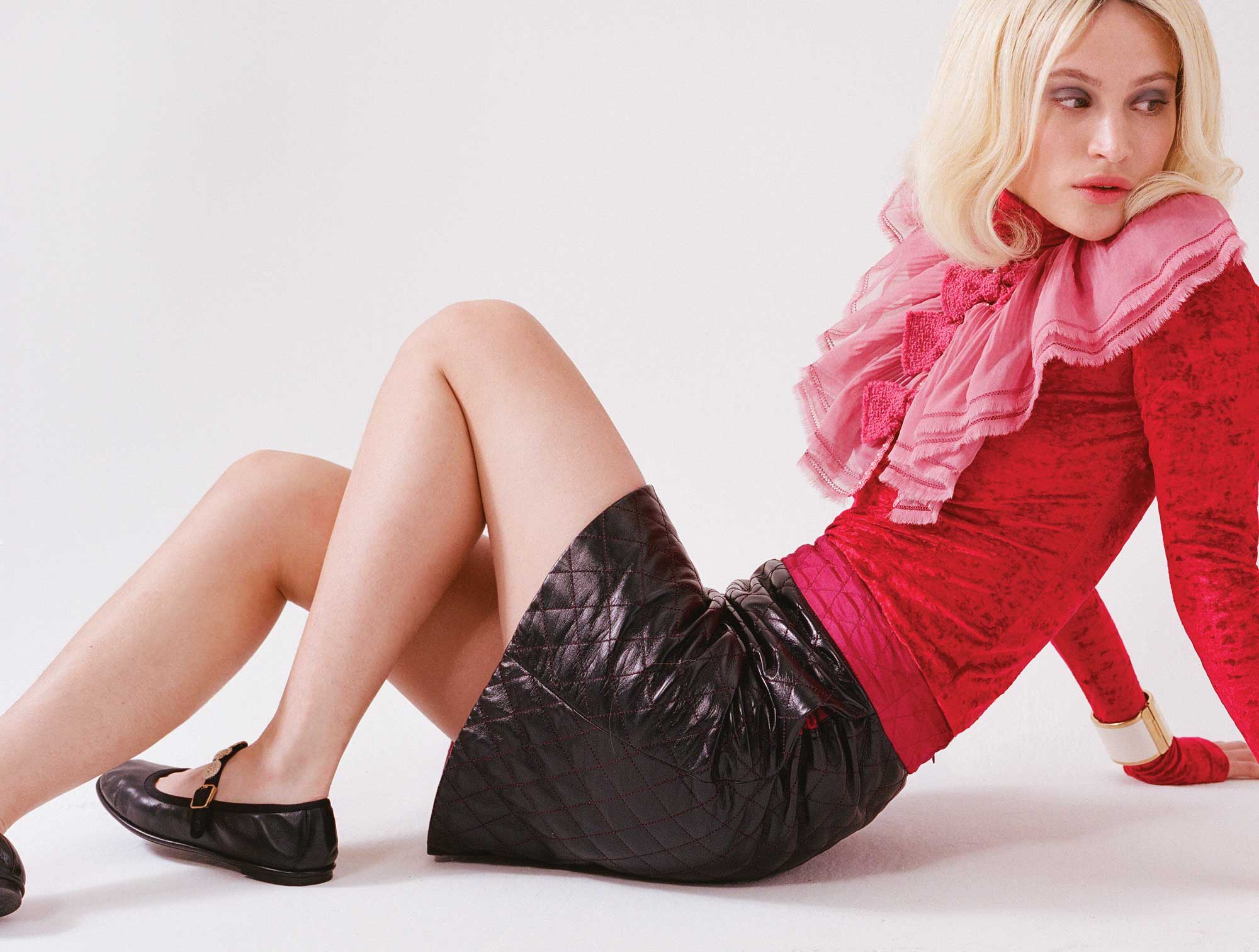After working for an Italian production company and the Gucci group, Valeska Schmidt-Thomsen joined Berlin’s Universität der Künste (UdK) in 2004, becoming the Managing Director of the Institute of Experimental Fashion & Textile Design, overlapping for one year with guest professor Vivienne Westwood. The Antwerp-trained designer then implemented a new direction in the course, focussing on fashion as personal expression.
“The last groups of students we had were very critical of fashion,” she explains, “but they were critical in varied ways. Some were critical of how fashion works as a political system or as a social system— sometimes they even rejected the system.”
“Students now have more challenges than I had in my studies. On one hand, they’re obviously concerned about the role of the fashion system in general and the impact it has on our world. And then they have challenges of their own, like artistic development— how they want to operate as designers in the world, and in the system. Some students do get a little bit overwhelmed by this. They ask questions that they didn’t ask, say, ten years ago, and these questions also directly concern me as a fashion educator, so I’m automatically dealing with them, too.”

“As a fashion educator, I have to first of all think about my role in the questioning of the world, and also of the fashion system. On one hand, I have a big responsibility human-wise because I work with young adults who are still developing their own identity, but also their artistic identity. And, on the other hand, we have to find out and point out things that are imminent and relevant for the future of the current fashion system, and how we should deal with those as designers.
The main problem is that the fashion system is very heterogeneous, not homogenous. We always talk about ‘the fashion system,’ myself included, but there actually are many systems. Take, for example, sustainability issues—it’s not that all my courses now have sustainability as a topic. There are a lot of smaller discussions, and I also support these discussion a lot. It’s not like we have ‘the sustainability course,’ ‘the gender course,’ or ‘the post-colonial course’—all of these topics are intertwined.
Sometimes it’s difficult as a fashion educator to be prepared for all of these issues. Some art schools are introducing broader and more critical discussions, and I do think there needs to be more space in the programmes for these open conversations.”

“People from the economy always say, ‘oh, there’s lack of marketing tools, and students should learn this and this and this,’ but the students already have quite a full programme. If you want to develop an artistic profile and an identity, you can’t just put more and more methods and lessons into the curriculum. You need room for thinking, reflecting and talking—and I think, in many fashion education institutions, that’s exactly what is missing. Most people are just working and preparing for the now and the immediate future, but we have to find bigger ideas for a future that’s not even so far away.
None of us have all the answers. Students come to me and think I know what to do because I’m their teacher, but for me those are topics I have to learn about as well. UdK is not a big institution; our classes are quite small, with twelve to 15 students. We have a very personal approach that creates an intimate study situation. I really had to learn what my responsibility is and where that responsibility ends. I don’t like hierarchies; I don’t want to be ‘the teacher.’ Of course, at the end, I give a mark, so I have to judge something, but it’s important to discuss things at the same eye level. There are a lot of expectations from both sides, and sometimes it’s not so easy to work with that—students should have the freedom to find their own answers. We can’t push them in a particular direction.”

“Luckily, universities and art schools are still very free environments to develop ideas, to discuss ideas, to ask specialists around you. It’s a safe space with many possibilities, much more than if you would just be in your studio on your own. In an educational institution, you’re not alone with your ideas; you constantly get feedback—not just from educators but also from other students.
What I would like for students to understand is that you can go to a company and change things from the inside—it’s not something that needs to happen from the outside. The decisions and choices a designer makes can have a huge impact.”
Photography LUCAS CHRISTIANSEN


